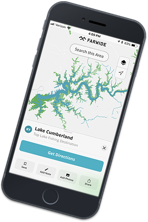10 Amazing Trout Fishing Spots in Rocky Mountain National Park
-
18671
-
0
With more than 250,000 acres of wilderness, 124 named peaks and 147 lakes, Colorado’s Rocky Mountain National Park offers endless outdoor activities including hiking, camping, climbing, and, of course, trout fishing.
You’ll find trout in 48 of the park’s lower-elevation lakes—and by lower-elevation we’re talking 8,000 to 11,000 feet—which contain brown, brook, rainbow and cutthroat trout. Twenty-five of those lakes are open waters, where anglers can possess up to eight fish (six must be brookies). In addition, the park offers more than 30 other catch-and-release locations, including hundreds of miles of streams and rivers.
If you’re planning a fishing excursion to RMNP, be sure to arrive as early as possible. Parking at the more popular trailheads is very limited and fills up quickly, requiring shuttle access from Estes Park and other towns if there are no available spots. Plus, you’ll have better luck catching trout in the cooler hours of the morning.
Ideal timing for these locations is between July and August on less-crowded weekdays, though you’re sure to have a pleasant time in June and September even if the fish aren’t biting as much.
Check out ten trout fishing options below, and discover more using the FarWide app and in-browser experience.
Open Fishing Waters
1. Loch Vale

The hike to Loch Vale begins from the Glacier Gorge Trailhead. It’s a fairly easy hike by RMNP standards—5.7 miles there and back with only moderate difficulty. On the way up to the Loch, which sits around 10,000 feet in elevation, you’ll make your way past beautiful waterfalls, including the popular Alberta Falls, named after the wife of early Estes Park settler Abner Sprague. While you’re there, enjoy views of Taylor Glacier, Taylor Peak, Thatchtop Mountain and The Sharkstooth. Also, you didn’t hear this from us, but certain anglers swear you can pull dozens of fish from slower-moving sections of the inlet that flows into the west side of the Loch if you arrive early enough.
2. Sprague Lake

Another location named after the Spragues, who homesteaded nearby in 1874, Sprague Lake is one of the most readily accessible fishing spots in the park, with a wheelchair-friendly path, as well as boardwalks and bridges around the lake. It’s a relaxing destination for casual brookie fishing, but still provides wonderful views of the surrounding area, including Flattop Mountain and Hallet Peak. Due to its accessibility, it’s one of the most heavily trafficked spots in the park, so if you’re keen to avoid crowds, get out there as early as possible.
3. Lake of Glass and Sky Pond

If you’re looking for a challenge, continue past the Loch for a difficult scramble up along Timberline Falls—a gorgeous and impressive cascade—and make your way up to the Lake of Glass and Sky Pond, the latter of which is less than half a mile beyond the former. Despite their names, Sky Pond is the larger of the two, a high-elevation bowl formed by Taylor Glacier, Taylor Peak, the Sharkstooth, and the Gash. The trek isn’t for the faint of heart or the unsteady of foot, but if you’re up for it, it’s well worth the experience. You’ll catch brookies and greenback cutthroat trout from the Lake of Glass, and mostly brookies from Sky Pond.
4. Lake Haiyaha

The journey to Lake Haiyaha is a fairly quick and easy hike starting at the Bear Lake Trailhead. On the way, you can stop to check out Bear Lake itself, as well as Nymph Lake, which is characterized by the water lilies growing around its edges. You’ll also be able to spot Longs Peak through the trees, and you should get some nice views of Hallett Peak, both above and reflected in the water. The stunning Dream Lake isn’t far off the main trail before you fork to your destination. Be prepared for wind at Lake Haiyaha, and arrive early to beat the crowds and ensure a catch.
5. Lone Pine Lake and Lake Verna

The trip to Lone Pine Lake isn’t terribly difficult, but it’s more than 10 miles roundtrip—and Verna is an additional mile or so beyond that—so get ready for a full day. It’s well worth it if you’re fond of forest hikes, with Colorado’s signature blend of aspens and pines lining the path from East Inlet Trailhead. Accessible near the beginning of the trail is Adams Falls, a short detour for the route there or back. This trail’s popularity is partially due to the fact that it was listed on the National Register of Historic Places in 2005 thanks to its design by the National Park Service and the Civilian Conservation Corps, but the two lakes are far enough along that traffic tends to decline by the time you reach them. Fishing is permitted in the waters along the trail and at each of the lakes (though double check with the ranger station for possession limits along the trail). Expect to find mostly brookies in these locations.
Catch-and-Release Locations
6. Big Thompson River above The Pool (Forest Canyon)

The journey to The Pool is rich with sights you won’t want to miss. Starting at the Fern Lake Trailhead, you’ll follow the Big Thompson River up to this distinctive confluence where Fern Creek meets the river. Catch-and-release fishing of the resident greenback cutthroat trout is permitted anywhere above The Pool along the river, which is highly recommended because the flora along the way is breathtaking in any season, with pines, willows, aspens and wildflowers (some still recovering from a wildfire in 2012) lining the route. You might spot a variety of wildlife as well, including elk, mule deer, moose, ducks, beavers and bears, and on the way there, you’ll pass through the Arch Rocks formation.
7. Fern Lake and Spruce Lake

Fern and Spruce Lakes lie beyond The Pool on the Fern Lake Trail. Along the way, you’ll find the site of the historic Forest Inn, which was torn down in 1959, as well as campsites and the stunning 60-foot Fern Falls. At the Spruce Lake Trail junction, hikers have the option of heading to one or the other—though neither is very far. At Fern Lake, there’s a small likelihood that you’ll spot a black bear, and you’re sure to get great views of Notchtop Mountain, Little Matterhorn, Knobtop Mountain, and Stones Peak. From Spruce Lake, you’ll see Gabletop Mountain and Castle Rock. Both lakes are home to greenback cutthroat trout. Note that part of the shoreline by Spruce Lake is often closed to protect endangered boreal toad habitats.
8. Ouzel Lake and Ouzel Creek

Down near the southeastern corner of Rocky Mountain National Park beyond Longs Peak, you’ll find Ouzel Lake and Ouzel Creek. A remote and low-traffic route that begins at Wild Basin Trailhead, this is the destination for anglers who prefer to avoid the crowds. You’ll work for it, but it’s more than worth the effort, with views of Copeland Falls, Calypso Cascades, and Ouzel Falls on the way. Ouzel Lake is considered to be one of the best fly fishing destinations for greenback cutthroat trout in the entire park. While the cuttys are catch-and-release only, you can keep a legal amount of brook trout from the lake and the creek (as long as you’re fishing above the falls).
9 & 10. Lawn Lake and Big Crystal Lake (along the Roaring River)

Head northwest of Estes Park to find another exceptional fly fishing area. The Roaring River is a short tributary of the Fall River, fed by Big Crystal Lake in the Mummy mountain range (so named evidently because it was thought to resemble a reclining Egyptian mummy). It flows through Lawn Lake, which makes a great base camp for excellent fishing both there and at Big Crystal nearby. (That’s no misnomer, by the way. The lake spans more than 25 acres, and it sits at 11,500 feet above sea level.) Because of its remote location, it’s recommended that anglers make camp and stay the night to get the best fishing experience.
Discover more locations like these with the FarWide app and in-browser map.












10072 Comments
สล็อตออนไลน์Leave Comment
Cancel Reply